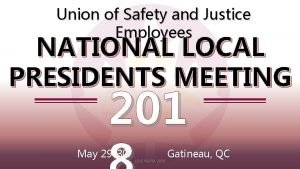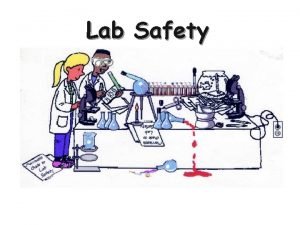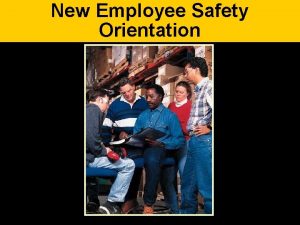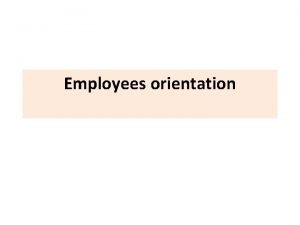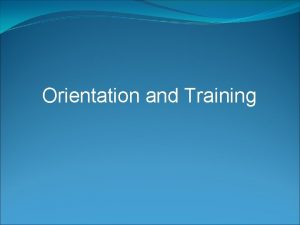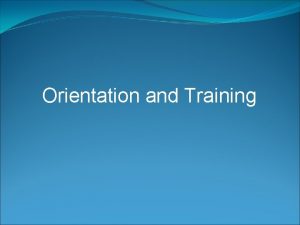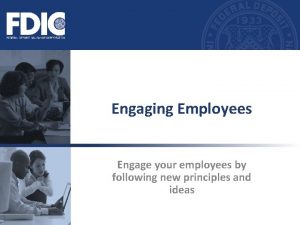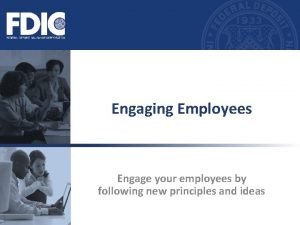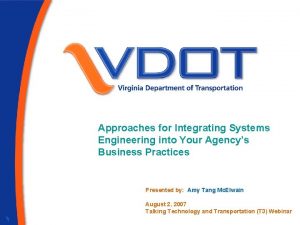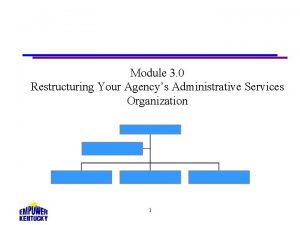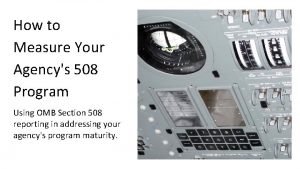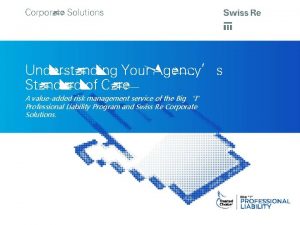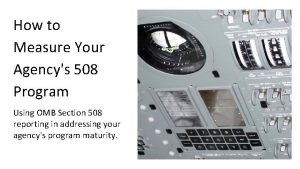Safety Orientation For all employees Introduction Your agencys

















- Slides: 17

Safety Orientation For all employees

Introduction Your agency’s success is built around quality, teamwork and professionalism. Part of this professionalism is your commitment to performing your job safely. It takes effort to keep safety foremost in your mind during every job task. Safety is each employee’s responsibility and performing each task safely makes everyone’s job easier in the long run.

Topics of Discussion This presentation will provide viewers with a fundamental understanding of basic job safety topics: – Equipment safety – Electrical safety – PPE – Fire prevention – Back safety – Accident reporting

Background Accident and injury statistics from the past 50 years indicate that most accidents are caused by unsafe acts of employees. These include taking shortcuts and violating safety rules or job procedures.

Background If your employer discovers you have committed an unsafe act, it will provide counseling on how to perform the job properly. You will be instructed in the unsafe act, what you can do to prevent similar unsafe acts and the time allowed for you to correct this unsafe act.

Basics of Job Safety You should report to work rested, alert and prepared to devote your full attention to the job. Alcohol and drug use as well as the residual results of their use are prohibited on the premises. Any violation can result in disciplinary actions to include termination. Report the use of any prescription drug that may affect your mental or physical functions to your supervisor before beginning work.

Equipment Safety If you are required to operate any type of equipment, make sure you have been trained and authorized. You will be trained regardless of your past experience or familiarity with the equipment. Most equipment has mechanical parts that require guarding. These guards must always be in place while the equipment is in operation. As an operator, you should make sure all guards are in place before operating the equipment. You should know the location of all emergency stop buttons as well as any lockout procedures and any

Equipment Safety Never place your hands or any other body part into operating equipment. It is your responsibility to make sure the area is clear before turning on any equipment. Also don’t leave running equipment unattended or perform maintenance on any machine while it is in motion. Keep your work area clean. Don’t let debris clutter your work area. Should tools or equipment become unsafe to use, notify your supervisor immediately.

Electrical Safety Never use electrical tools near water. Use Ground Fault Circuit Interrupters (GFCI) around water source. Report damaged switches, plugs, cords, receptacles, tools and other electrical hazards to your supervisor immediately. If the cord you are using has a third prong, it must not be broken off. This provides the proper grounding for the cord or tool. If the data plate on the tool does not say the equipment is double insulated, its plug must have the ground prong for safe use.

Personal Protective Equipment Eye protection comes in many forms, such as safety glasses, goggles, face shields, and welding protection. Your supervisor will select the proper eye protection for the hazard, but the most important thing is for you to wear it when provided. Don’t wear torn or loose-fitting clothing that can get caught in moving machinery. Wear serviceable leather top shoes. Athletic shoes don’t offer foot protection Be aware that long hair and jewelry can get caught in moving machinery. When handling rough or sharp parts, wear the proper gloves for your hands. Ask your supervisor any questions or refer to the MSDS for additional information before working with any chemical.

Fire Prevention Don’t create conditions that promote fires. Aisles, corridors and walkways should have the required clearance for you to walk according to fire codes. Sprinkler heads should have at least 18 inches clearance from objects below and electrical panels and transformers should have at least 36 inches of clearance in all directions. These areas should not be considered as storage areas. Ensure you know your agencies emergency procedures and proceed to use these procedures in an emergency.

Fire Prevention Don’t take chances. If you can’t extinguish the fire safely, leave the fire fighting to the professionals. Learn where fire extinguishers at your facility are located and make sure you know how to operate them. If time permits, extinguish the fire safely. Know where emergency exists are located and make sure that they aren’t blocked. In the event of a fire, personal safety is the greatest concern. Activate the nearest pull alarm to alert everyone else and notify your supervisor.

Fall Prevention Don’t use chairs, boxes or makeshift platforms to reach high places. Use a ladder designed for that purpose. Inspect the ladder before use. Never use a defective ladder. Never stand on the top two steps of a stepladder. Don’t jump off ladders or platforms. You can be easily injured, and sprained ankles or broken legs take a long time to heal.

Fall Prevention Slips and falls injure more people than any other type of accident. Pay attention to hazards such as wet or slippery floors and torn carpet or tile. Eliminate hazards when detected. Never run at work. Use only authorized walkways or aisles, especially in warehouses or around machinery. Always hold onto the handrail when walking up or down stairs. Use fall protection when working in an elevated area.

Preventing Back Injuries Most back injuries result from improper lifting, such as stretching your back muscles or twisting your back while lifting an object. Exercise and stretch before lifting. The discs in your back act as shock absorbers between the vertebrae and keep the nerves from being pinched. The basic lifting technique keeps the discs in the proper alignment between the bones. When you bend your back, the discs can be damaged. Bend your knees, not your back.

Preventing Back Injuries When you lift anything, get a good grip, bend your legs and use your leg muscles to lift the load. Don’t stretch while lifting anything. This can cause painful muscle tears that take a long time to heal. Never twist when lifting. This is extremely dangerous. Only you can prevent back injuries. Think about safety when you lift anything.

Injuries on the job If you are injured on the job, you must report the injury to your supervisor immediately. Even if you don’t need medical treatment, report all accidents, near misses and injuries to your supervisor when they occur.
 Basic safety construction site safety orientation
Basic safety construction site safety orientation Basic safety orientation
Basic safety orientation Union of safety and justice employees
Union of safety and justice employees Polycentric management orientation
Polycentric management orientation Always wear safety glasses
Always wear safety glasses Opposite rays
Opposite rays Employee safety orientation quiz answers
Employee safety orientation quiz answers Give us your hungry your tired your poor
Give us your hungry your tired your poor Fspos vägledning för kontinuitetshantering
Fspos vägledning för kontinuitetshantering Typiska drag för en novell
Typiska drag för en novell Tack för att ni lyssnade bild
Tack för att ni lyssnade bild Ekologiskt fotavtryck
Ekologiskt fotavtryck Varför kallas perioden 1918-1939 för mellankrigstiden
Varför kallas perioden 1918-1939 för mellankrigstiden En lathund för arbete med kontinuitetshantering
En lathund för arbete med kontinuitetshantering Särskild löneskatt för pensionskostnader
Särskild löneskatt för pensionskostnader Tidbok
Tidbok Anatomi organ reproduksi
Anatomi organ reproduksi Förklara densitet för barn
Förklara densitet för barn


